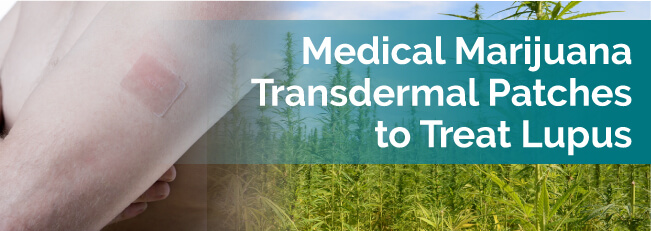
One of the many disorders considered eligible for medical marijuana treatment across the country is lupus. As we learn more about the medicinal uses of weed, we find more evidence that its benefits can help patients with lupus deal with their symptoms.
When a patient uses pot to treat lupus, not all usage methods work the same. Depending on your health problems, personal preferences and body chemistry, some treatments will suit you better than others. Some patients prefer to use patches — this guide will help you understand your options if you decide to take that route.
Lupus causes your immune system to attack your healthy cells. The symptoms’ nature and onset vary from person to person — no two lupus patients’ experiences are alike.
Some potential lupus symptoms include headaches, fatigue, memory loss, joint pain and swelling. Lupus can manifest in different systems, so your symptoms depend on the location your lupus affects.
Common weed treatments include smoking, vaping and edibles. A lesser-known, emerging medication method is the transdermal medical marijuana patch.
To use a transdermal patch, you apply it to a part of your skin without hair and with plenty of veins, like your ankle or wrist. It will release medicine into your bloodstream gradually.
Unlike other ways to consume medical cannabis, patches cut out the middleman. Most weed medications prevent you from taking in the whole dosage because it must go through a part of your body before entering the bloodstream. The chemicals in patches directly enter your bloodstream, so you can take advantage of the entire dosage you take.
We recommend using patches with higher THC concentrations for immunosuppressive, energy-boosting and mood-enhancing purposes. Patches including CBD have fewer psychoactive effects than THC and suit symptoms like pain, depression and insomnia. You may have to experiment with different patches and consult with your doctor to figure out the right patch for you.
Depending on where you live, you could have many options for patch treatments or few. Let’s go over some common transdermal patches and where you can find them.
One of the most acclaimed and popular weed patches, the patches from Mary’s Medicinals, come in a variety of dosages and chemical ratios to suit numerous illnesses.
Papa & Barkley offers patches with multiple formulations so you can get the result you need. They market their patches as containing over 30mg of cannabinoids each, but they do not list an exact number.
MüV keeps it simple by offering three kinds of patches with easy to understand chemical ratios.
Present Naturals specializes in transdermal patches containing cannabinoids and vitamins. They can ship their CBD patches nationally, but you’ll still fail a drug test if tested while one is in your system.
Many of the states where weed patches are available, such as California and Washington, already allow recreational marijuana use. This means that if you’re over 21, you can buy a patch from a dispensary without a medical marijuana card. However, if you don’t live in one of those states or want extra legal protections, you may want to register for your state’s medical marijuana program.
For more information about how cannabis can be used to treat Lupus, check out our resources:


Please allow us to access your location to find local dispensaries.
VIEW ALL DISPENSARIES ➔